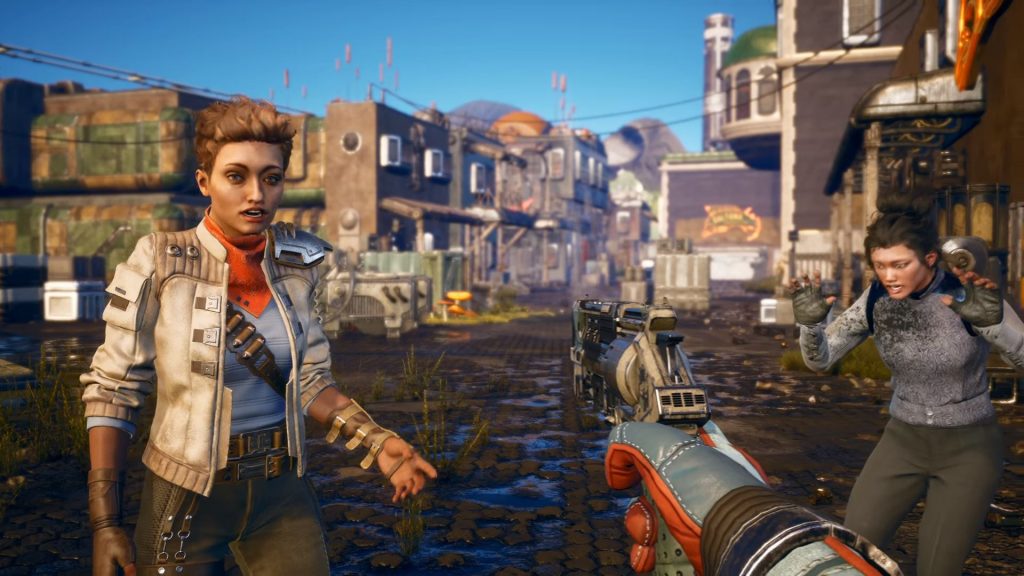There’s an urge to compare The Outer Worlds with Fallout from the get go, when you get revived from decades’ long cryogenic sleep and end up crash landing on a nearby planet. These two share some of their DNA, given that Obsidian is made up of former employees who started the Fallout franchise, but The Outer Worlds is markedly different in many important ways.
The game feels comfortable, like putting on a well worn glove, with the way it progresses quests and unlocks areas to explore. However, it’s not the huge sandbox journey that something like Skyrim or Fallout is. You journey from planet to planet (and space stations), exploring how people and corporations are holding up against the elements. The quests are mostly entertaining, though some of them have grim undertones. One woman, for instance, has managed to farm from a barren soil by mixing human corpses in as compost. In another quest, you end up wandering into a house full of cannibals.
There’s tons of fun moral decisions to make with major quests, and you can go for interesting combinations of altruistic and immoral routes. The faction system means that if you make decisions in favor of certain parties, your reputation with them improves considerably.

You also get to meet (and recruit) companions, who also have quests of their own. Around 6 hours into the game, I have already met five (of six total) companions. They have their own dialogue in many conversations, and also give their opinions about the actions you take. Your own character is mute, however, which is slightly disappointing considering Fallout 4 made good use of a voiced protagonist.
You have a ship of your own, called The Unreliable, which serves as a hub for your crew, much in the same way that Normandy did in the Mass Effect franchise. There’s not a whole lot to do there, but every time you return there, you find your crew up to one thing or the other.
For my character build, I specialized in ranged weapons and intelligence, which means that my character can talk her way out of most sticky spots. You get to spend ten points after leveling up, and also add weapon mods at workbenches. Also, you can do ‘time dilation’: slow down time ala bullet time. Like Fallout’s VATS, it’s a cool mechanic to have. There’s also a novel feature called faults, where you can opt into a weakness in exchange for a skill point.
Visually, this is a beautiful game, and it runs fairly well on my 4 year old GTX 960M. The world building here is reminiscent of Mass Effect in a good way. The story is robust, at around 30 hours- and it’s breezy enough to keep you going for a good while. If you speed through it though, it lasts up to 12 hours if you only really pay attention to the main quest.
The Outer Worlds is not a comprehensive, role-playing exercise in excellence like The Witcher 3 is, nor does it try to be. It’s a great mix of elements you see in Bethesda and Bioware games, and that’s a good mix to have when both studios are far away from launching new games. It’s a great launching pad for Obsidian, and hopefully, future follow-ups can take the franchise in interesting directions.